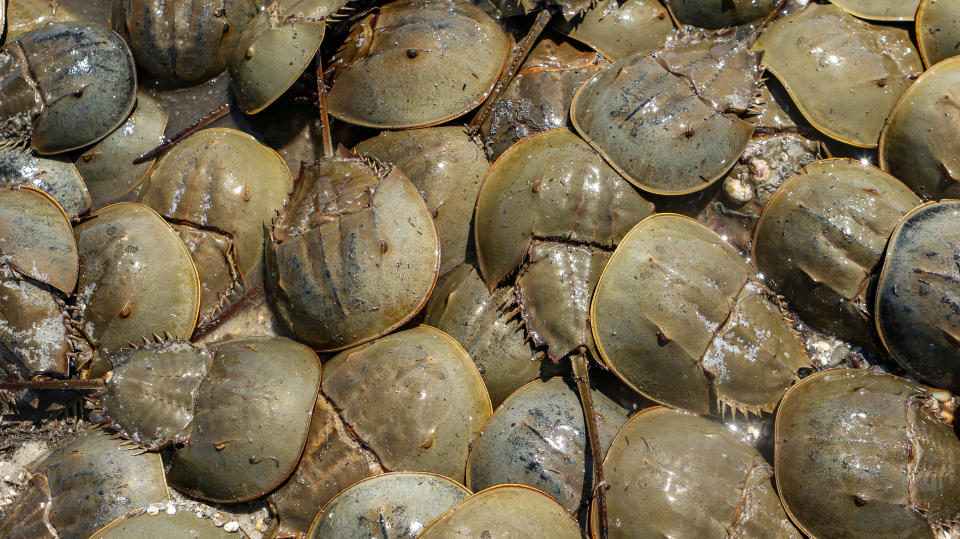Delaware's horseshoe crab policy is in urgent need of reform | Opinion
A press release recently issued by the Delaware Department of Natural Resources and Environmental Control, titled “Growing Horseshoe Crab Population Supports Migratory Shorebirds along Delaware Bay, Including Threatened Red Knots,” leaves readers with the impression that all is well with the Red Knot, the iconic shorebird listed as an endangered species by the state of Delaware. That statement is open to dispute from scientists, environmentalists and the public, including those who feel the extinction of the Red Knot is now a real possibility.
The press release reports that the population of Red Knots is estimated to be “40,000 to 50,000.” It does not elaborate that these are virtual numbers based on a theoretical model used by the Atlantic States Marine Fisheries Commission , which has not been field verified. In contrast to the virtual numbers, estimates from aerial surveys, as reported by the Delaware Bay Shorebird Project, show Red Knots increased modestly in 2022 to more than 12,000, from 6,800 in 2021, but still only a small fraction of the peak population of more than 94,000 in 1989.
The press release fails to mention the model’s glaring omission of the most significant factor affecting the success of the Red Knot’s Delaware Bay stopover, the density of horseshoe crab eggs on the beach. In May 2022, the horseshoe crab egg density in the Delaware Bay was approximately 7,000 eggs per square meter. In the 1990s, before the period of over-harvesting of horseshoe crabs, eggs reached nearly 50,000 per square meter. The omission of this critical input factor raises questions about the validity of the model.

There is also a question about the photo used in the press release, which shows a plethora of horseshoe crabs at Slaughter Beach, with the DuPont Nature Center at Mispillion Harbor in the background. If the photo illustrates horseshoe crab spawning this past spring, why is there no date? The omission of the date raises the question, is it a file photo taken at prior date, used to misrepresent the actual spawning in 2022?
The statement in the press release, "the Delaware Bay horseshoe crab population has steadily increased over the last decade,” needs to be qualified. Since 2001, a Virginia Tech trawl survey has been collecting data on horseshoe crabs along the Atlantic coast. That survey had been considered the gold standard by the ASMFC for use in its earlier model. That survey has consistently shown no horseshoe crab population increase. Recently, the ASMFC included two additional non-specific surveys in a new model, weighing all three surveys equally. The pooled survey now shows an increase which raises another question, is this cherry-picking of input data to give a more favorable result?
Delaware's horseshoe crab bait harvest policy is currently set by DNREC, based on the recommendations of the ASMFC. That is in spite of the fact that following the ASMFC’s recommendations is not demonstrating any recovery of the Delaware-endangered Red Knot. The State of New Jersey implemented a moratorium on the horseshoe crab harvest in 2008. That moratorium has contributed immeasurably to Red Knot survival, but the impact of the New Jersey moratorium has been limited due to the continuing bait harvest on the Delaware side of the Delaware Bay. A reform of Delaware’s horseshoe crab policy is urgently needed to prevent a future irreversible decline of the Red Knot.
Steve Cottrell is president of the Delaware Audubon Society.
This article originally appeared on Delaware News Journal: Delaware's horseshoe crab policy is in urgent need of reform

